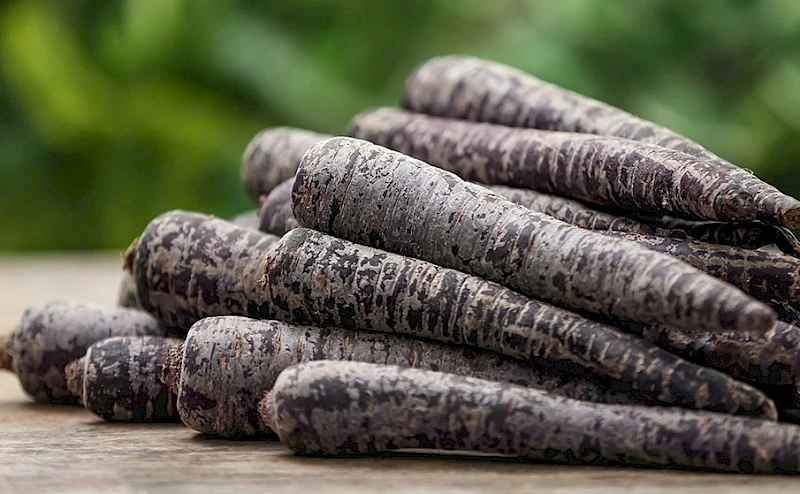Top 8 Unusual Foods of Northern Cyprus
Cyprus is a rather unusual island, unique in many ways. In particular, it sells products that are rarely found elsewhere.
Unusual Foods of Northern Cyprus
From strange-looking items to familiar ones used in unexpected ways — here’s our overview.

Kolokas (Taro)
Kolokas, also known as kolokasi, colocasia, or taro, is a root vegetable grown in Northern Cyprus. It’s usually cooked and eaten much like potatoes, but it has a rich, almost nutty flavor. Thanks to the climate, kolokas grown here are generally quite large. Serve with onions, pork, chicken, or lamb in a tomato sauce or make a hearty stew. Read more about kolokas dishes.
Siyah Havuc (Black Carrot)
Siyah Havuc is a black carrot that appeared in the Middle East around 5,000 years before the orange variety we know today. It's great for lowering cholesterol, and its juice contains about 12 times more antioxidants than orange carrots. The juice, called şalgam, is available in most supermarkets, and the root itself can be used just like regular carrots.
Kohlrabi
This vegetable, also called “cabbage turnip,” grows in many places, but in Northern Cyprus, it comes in two colors — purple and green. Choose small ones (around 5 cm wide) as they are more tender and great for stews, while the leaves can be used like spinach. Kohlrabi is an excellent source of magnesium, vitamin C, and phosphorus.
Okra
Also known as “lady fingers,” okra is widely available in Northern Cyprus. Its taste is somewhat reminiscent of eggplant, zucchini, and green beans but with a distinct flavor. Choose firm and crispy okras that snap easily when bent. Use them to thicken stews, or slice and bake them with tomatoes and oil for salads or side dishes.
Aysirgan Otu (Stinging Nettle)
Usually avoided, stinging nettle — or aysirgan otu — is considered a delicacy in Northern Cyprus. It's typically boiled and served with eggs, olive oil, lemon, and salt. Once boiled, it can be used as a salad and paired with toasted pine nuts, chopped tomatoes, fried onions, and fresh Turkish yogurt.
Prickly Pear (Type of Cactus)
The cactus is not only a handy natural fence but also edible. Prickly pear tastes like a tangy cucumber and is wonderfully refreshing in the heat. Learn how to eat and peel this cactus safely in our special guide.
Walnut
You might think there’s nothing unusual about walnuts — but have you ever tried them the way they do in Northern Cyprus? Half-ripe walnuts are marinated until they turn black. Curious how to enjoy this delicacy? Find out here.
Carob Tree
The fruit of the carob tree is harvested in Cyprus at a very specific time, and police prevent unauthorized gathering. So what is this tree, and what are its benefits? Read more here. Spoiler: there are many ways to use it — including for making strong alcohol!
Frequently Asked Questions About Food in Northern Cyprus
What drinks are popular in Northern Cyprus?
Among non-alcoholic options: ayran (a yogurt-based drink), Turkish coffee (served in small cups), tea (strong and black, served in tulip-shaped glasses), and the mentioned şalgam. For alcoholic drinks — rakı.
Are there any unusual desserts in Northern Cyprus?
Yes, two desserts stand out for their uniqueness: palouze and mahallepi. Click the links to learn more about each.
What cheeses are popular in Northern Cyprus?
The most famous is halloumi — a true brand and symbol of the island. It’s featured in many dishes. Other cheeses include nor — a fresh whey cheese produced as a byproduct when making other cheeses, particularly halloumi. Feta and Turkish white cheese (beyaz peynir) are also very popular.
Follow us on Instagram and our Telegram channel where we share stories about delicious Northern Cypriot cuisine and much more!

